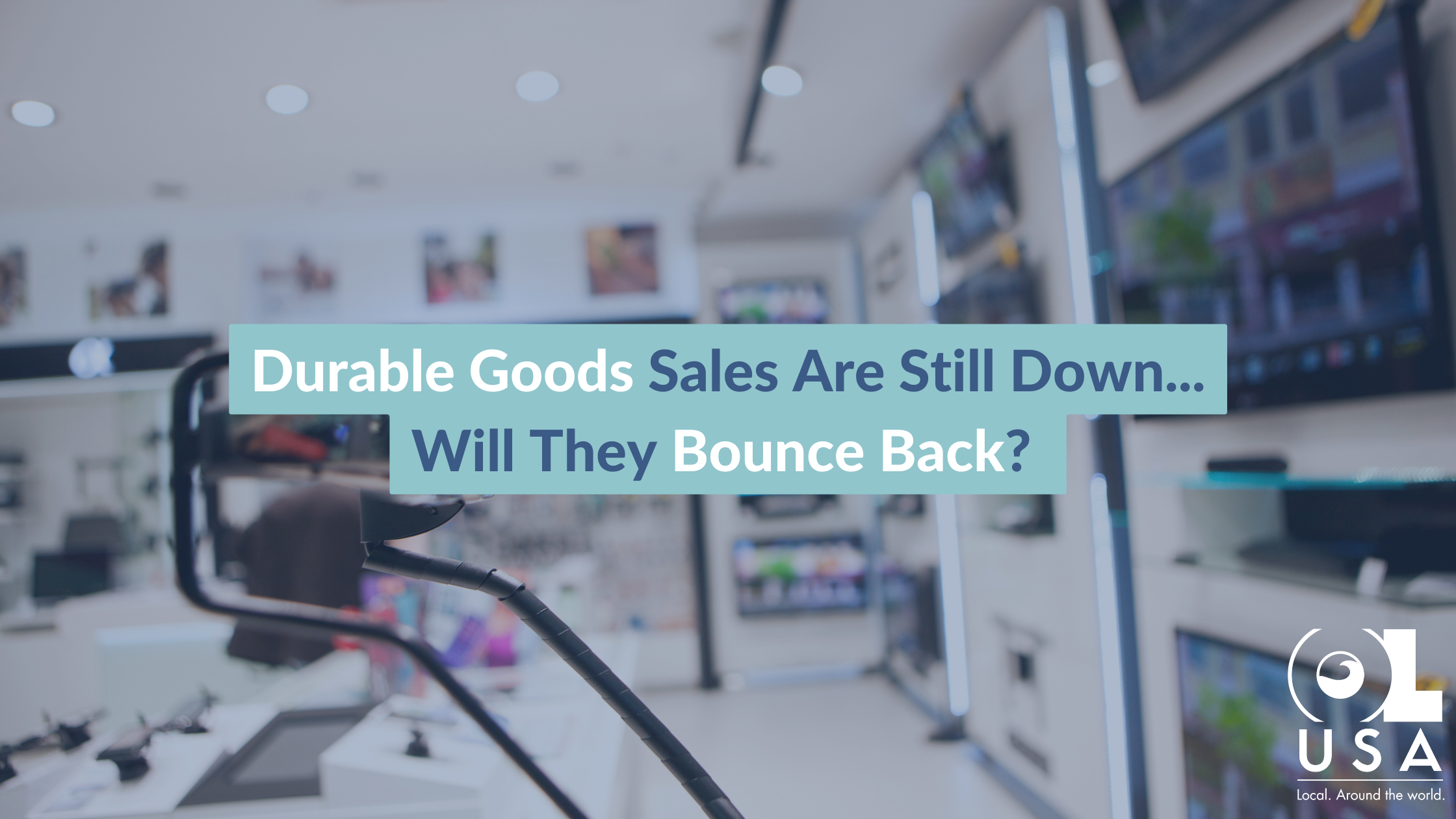Products that people sell mainly fall into two categories: “durable” or “consumable.” They’re pretty much exactly what they sound like. Consumable goods are made, shipped, and sold to be used and discarded or recycled within a short period of time—things like paper towels, disposable cups, scented candles, and other products that don’t last very long. Durable goods, on the other hand, are intended to last; TV sets, office furniture, laptops, kitchen appliances, and other products that don’t need to be replaced for years are all “durable.”
Last week, the Census Bureau released their Monthly Advance Report on Durable Goods Manufacturers’ Shipments, Inventories, and Orders (PDF link), and once again, durable goods are down across the board. New orders are down, shipment totals are down, and while existing inventories increased. That indicates wholesale and retail businesses are still having difficulties moving the product they have, and are decreasing new orders as a result. This report is similar to what we’ve seen in most recent months, mainly representing a continuing trend rather than a change in circumstances.
Why Is This Happening?
We know we’ve talked about this a lot recently, but Covid and government responses to it caused all sorts of market imbalances in ways that weren’t easily predictable. What we saw during the early days of Covid was unexpected by most.
First, there were lockdowns in many states—in some cases, we’ll call them “strong suggestions” that everyone stay home as much and for as long as possible. This was the “two weeks to flatten the curve” campaign that was extremely effective at convincing people to stay home. This resulted in tremendous numbers of employees switching directly to remote work in a very short time, a historic shift that still continues to this day.
Second, the US government responded with the largest spending bill in history. The part of that massive bill that most directly concerns this topic is the Paycheck Protection Program. This plan provided businesses with the opportunity to apply for extraordinarily cheap loans, which were surprisingly forgivable if the recipient of the loan followed the eligibility requirements—namely, that they continued to keep everyone on their payroll, maintain the same rates of pay, and that at least 60% of the loan be used to accomplish those two things. The long and short of it is that employees who otherwise would have been laid off or furloughed without pay for untold lengths of time kept drawing their same paychecks.
Then the final piece of the puzzle: stimulus checks were sent out. Everyone who met the eligibility requirements began receiving payments directly from the government. The first round went out quickly after the initial lockdowns started. Putting everything together, the typical American household had the following circumstances:
- They were, for the most part, staying home and only venturing out for necessities;
- They (thankfully) kept their jobs, with some exceptions, and still received the same paychecks they were accustomed to, though they were now usually working remotely;
- They were suddenly given an unexpected windfall of thousands of dollars they hadn’t planned on receiving.
What you had here was a recipe for a spending spree unlike anything else we’ve seen in history. Stimulus checks aren’t anything new; the government has used them as a tool to add a little juice to a flagging economy before. However, they were typically sent out during times of high unemployment or particularly low consumer spending. This may have been the first time they were sent out to virtually every citizen before unemployment began rising, and on the heels of a previous spending spree.
Because we can’t forget what had happened right before the lockdowns: stores were stripped bare of all sorts of consumable goods. Paper towels, toilet paper, tissues, hand sanitizer, cleaning solutions, and all kinds of other basic necessities were nearly impossible to find in March/April of 2020. The rumors of a lockdown and fear of Covid drove people to panic buying everything they could get their hands on, partially because people were anticipating that they wouldn’t be able to casually head to the store for an unknown length of time.
So, to recap: you had an American middle class still mostly gainfully employed, with windfalls of cash, already overstocked on basic household necessities, and spending a lot of time at home. What do you get when you add these things together? Big ticket item shopping!
Yes, people started buying all sorts of durable goods during this period. Television, computers, game consoles, and furniture sales all increased. But probably the most surprising sales spike was for even more expensive items—Recreational Vehicles. That’s right; RV sales skyrocketed. It makes sense if you think about it: families knew they weren’t going to be going away on vacation for a while, so what’s left if you want to get away? Camping trips, of course. Combine the higher than usual amount of available cash with the fact that loans were extremely cheap at the time, and suddenly a luxury RV sounds a lot more feasible to the average family than it did in years past.
The Problem
Unfortunately for businesses in these industries, these products last a very, very long time. How often do you replace your TV? Maybe once every five years? This early Covid spending spree compressed years of demand into a period of a few months. Now you have an American middle class that has just recently bought the TVs, RVs, computers, and furniture they wanted, and doesn’t need to replace most of it for another few years.
In short: because the middle class went on a shopping spree, they already bought most of the durable goods they wanted, and since they last for years, they aren’t replacing them quickly enough.
There is one other complication here: since the Federal Reserve raised the prime interest rate, loans are no longer as cheap as they were a couple of years ago. We went through close to a decade of very low (in some cases, borderline nonexistent) interest rates, and for Generation Z, those are the only interest rates they have life experience with. Now they’re spiking upward. That’s pumped the brakes on a lot of the higher-ticket products—like the RV industry, for example—and those sales are going to take some time before they bounce back.
The Future
Nobody knows what the future will hold, but this Census report is not full of good news for the next quarter. We expect this period of low sales to be mostly transitory; the pendulum will swing back eventually. What we don’t know is how long it will take. Until consumers renew their faith in the economy, we expect the current trend to hold. That said, uncertainty cannot last forever, and once people get the clarity they need on what’s coming, we expect this to turn around, and fast.
Until then, businesses should work with logistics partners who can help them get the most out of the products they do sell. You should focus on top-to-bottom efficiency within your existing supply chain, with the lowest possible shipping costs, removing unexpected warehousing fees, and handling last-mile delivery as easily as possible. Contact us to learn more about what we can do to help you.



